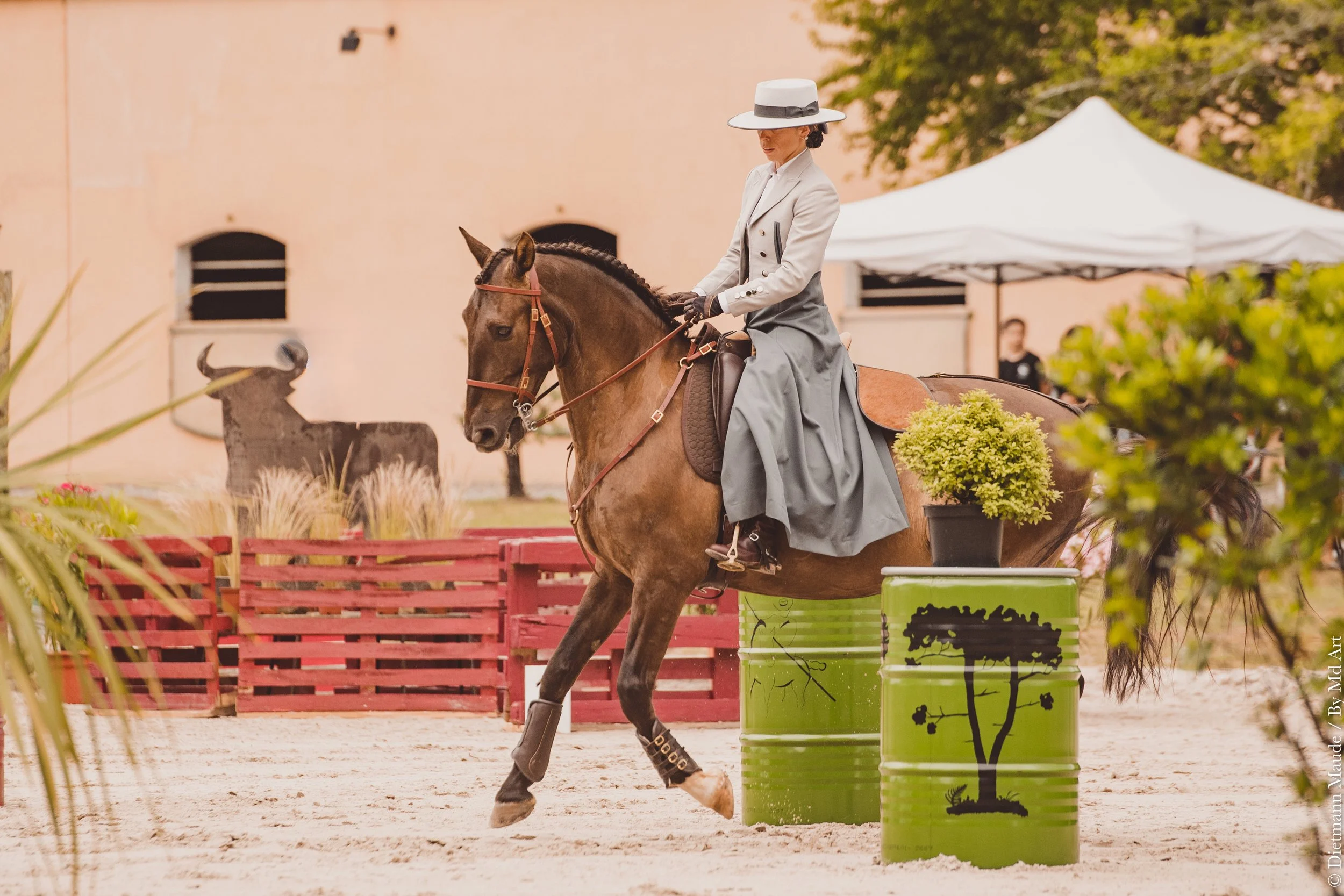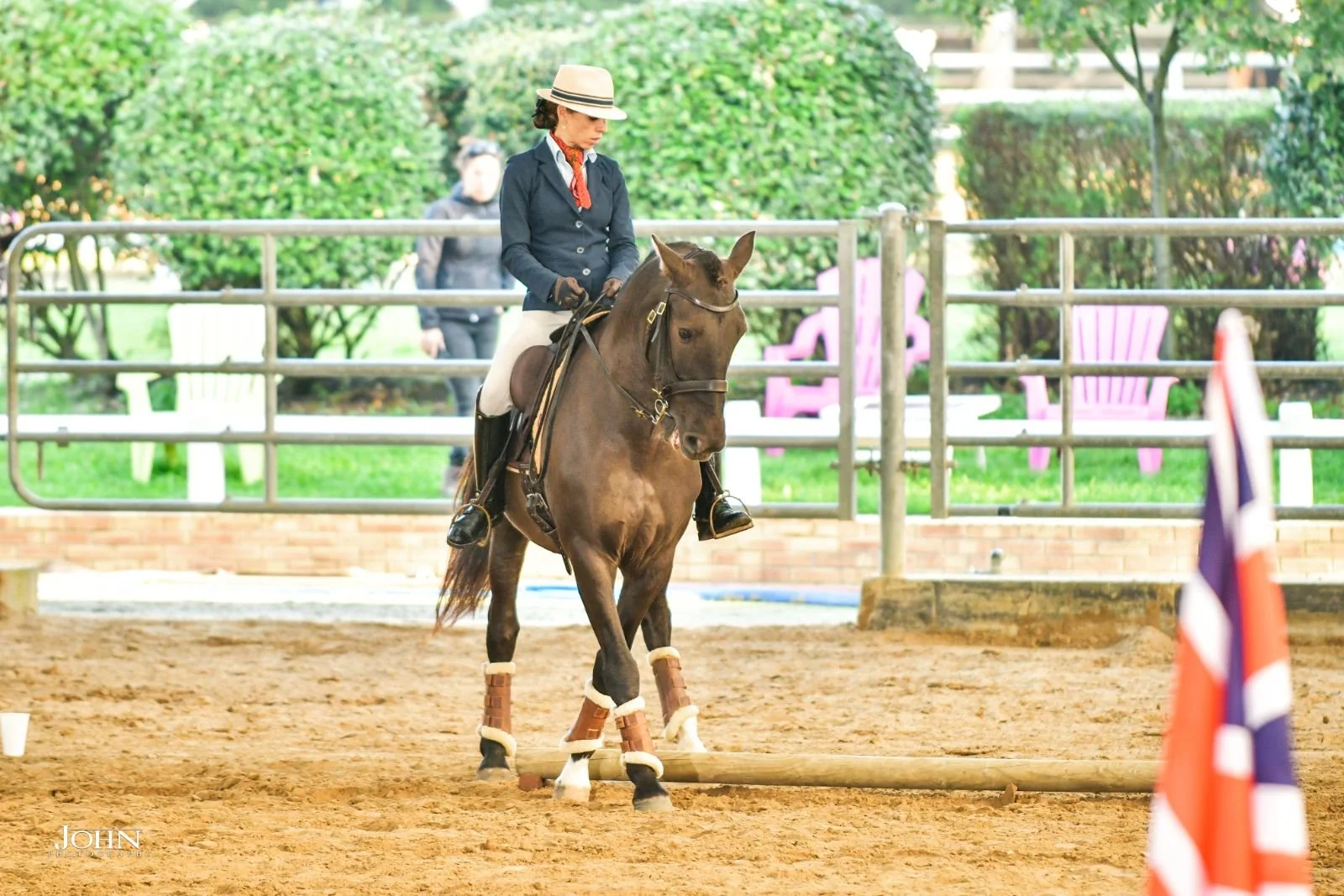What is Working Equitation?
Table of Contents Hide
Working equitation is a fascinating equestrian discipline that not only tests the horse and rider's technical abilities but also celebrates the cultural heritage of traditional equestrian practices.
The discipline combines elements of dressage, obstacle negotiation, and equestrian skills that were traditionally used in fieldwork, such as herding cattle, while showcasing traditional riding styles, costumes, and equipment from various countries.
The sport's emphasis on precision, agility and partnership between horse and rider makes it both challenging and visually captivating to watch!
The history of Working Equitation
Working Equitation became a competitive sport in 1996. Initiated by Italy, France, Spain and then Portugal, it is now recognized and practiced in more than 35 countries worldwide!
The sport tests the partnership and ability of the horse and rider to maneuver obstacles.
It is governed by the World Association for Working Equitation internationally, and each country has its own association to set the rules for competitions and support the development of the sport.
The different trials and classes in Working Equitation
Competitions typically involve four trials: dressage, ease of handling, speed, and cattle handling (when possible, logistically speaking):
In the dressage trial, the horse and rider perform a series of prescribed movements to demonstrate their harmony and precision.
The ease of handling trial tests the horse's agility and the rider's ability to navigate obstacles with finesse and confidence.
The speed trial challenges competitors to complete a course of obstacles against the clock.
Finally, the cattle handling trial showcases the horse and rider's ability to work with livestock, reflecting the discipline's historical roots in practical horsemanship.
There are different levels of difficulty, depending on the age of the horse and the rider's skills.
At the most advanced level, the rider must ride with just one hand on the reins.
The Dressage trial
The dressage trial in working equitation is similar to traditional dressage, where the horse and rider perform a series of predetermined movements in a designated arena.
The emphasis is on the harmony, precision and elegance of the horse and rider's performance. Movements may include various transitions, circles, changes of direction, and lateral work.
The dressage trial in working equitation showcases the partnership between the horse and rider and their ability to execute movements with grace and accuracy.
The Ease of Handling trial
In the ease of handling trial, the horse and rider navigate a course that includes a variety of obstacles such as gates, bridges, side-passing poles, and other challenges that test the horse's agility and the rider's skill in guiding the horse through the course.
The emphasis is on smoothness, precision, and control as the horse and rider tackle each obstacle.
This trial reflects the practical skills required for maneuvering through different terrains and obstacles, which were historically essential for working with livestock.
The Speed trial
The speed trial is an exhilarating test of agility and quick thinking for both horse and rider. Competitors must navigate a course of obstacles against the clock, aiming to complete it in the fastest time possible.
This trial requires a combination of speed, control, and accuracy as the horse and rider tackle the obstacles at a brisk pace.
It's a thrilling display of athleticism and teamwork between the horse and rider.
The Cattle Sorting trial
The cattle handling trial is a unique aspect of working equitation that sets it apart from many other equestrian disciplines.
In this trial, the horse and rider demonstrate their ability to work with cattle, reflecting the historical use of horses in herding and livestock management. Competitors may be required to separate cattle, drive them through a series of obstacles, or demonstrate other skills related to working with livestock.
This trial highlights the practical applications of working equitation skills and the partnership between horse and rider in managing livestock.
The combination of technical precision, agility, speed, and practical horsemanship makes working equitation a dynamic and engaging equestrian discipline for both participants and spectators.
Working equitation is not only a thrilling sport to participate in and watch but also a wonderful way to preserve and promote traditional horsemanship skills from around the world.
Whether you're an equestrian enthusiast or simply appreciate the beauty of horses in action, working equitation offers a unique and exciting experience for riders and spectators alike!
Learn Working Equitation online
While Working Equitation is a great discipline that can be performed by riders at any level, most riders won’t have easy access to a teacher or riding school that can help them train in the sport.
That’s one of the reasons why we created our online Working Equitation courses, based on the methods of international competitor and trainer Hervé Maurel.






